Iranian opposition
All topics-
 Iran elections
Iran electionsWhy Tehran may announce a fake voter turnout
Banned from the streets, the protests in Iran continue. This week's elections will reflect just how much – or how little – popular support the Islamic Republic still enjoys
-
 Iran: a graphic novel
Iran: a graphic novelThe making of a revolution
Nothing has been the same in Iran since Mahsa Amini, a young Kurdish woman, was murdered by the morality police in September 2022. Cartoonist Marjane Satrapi's new book takes its name from the protest slogan, "Woman, life, freedom", and offers an easy-to-grasp take on the complicated background to the current situation
-
 Iran and Mahsa Amini, one year on
Iran and Mahsa Amini, one year onTehran's power base is fading
Prominent voices from within the Islamic Republic's inner circle of power – once spokesmen for the most radical factions – are now vehement in their criticism of Ali Khamenei, Iran's Supreme Leader. They used the first anniversary of Mahsa Amini's death to drive home their condemnation. By Ali Sadrzadeh
-
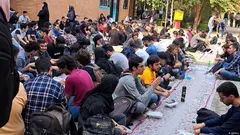 Iran protests
Iran protestsTehran dismisses university lecturers
University lecturers critical of the regime are being dismissed, while those loyal to the regime are being rehired: Tehran's Islamic regime is apparently reshaping the country's universities even more strictly according to its own ideas. By Iman Aslani
-
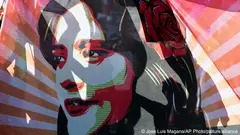 Mahsa Amini: one year on
Mahsa Amini: one year onTehran has lost the battle for credibility
One year after Mahsa Amini died in police custody, sparking nationwide protests, the Iranian regime has quashed all displays of public discontent. But the 2022 protest movement was not a lost cause and its impact on Iranian history cannot be undermined, writes Leela Jacinto
-
 Transnational repression
Transnational repressionWhy a friendlier Middle East is more dangerous for activists
Authoritarian governments often harass and hinder their critics, even if those people are outside the country. As former enemies become friends in the Middle East, will they cooperate to shut down opposition voices? By Cathrin Schaer
-
 Books on the Iran protests
Books on the Iran protestsFighting for freedom in the "mullah state"
Women are the main drivers behind the new revolutionary movement in Iran. Four female authors offer inside views and moving snapshots from a variety of perspectives. Review by Rene Wildangel
-
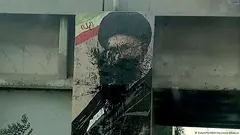 Shia clerics in Iran
Shia clerics in Iran"Save Islam" – or just the mullahs?
Are the Shia clergy disappearing as a pillar of Iranian society, degenerating into a mere power apparatus? Nationwide attacks, vilification and the murder, or attempted murder, of mullahs are becoming more frequent. Every turban wearer is seen as representing and symbolising the hated regime. By Ali Sadrzadeh
-
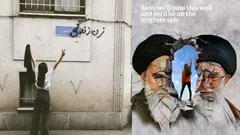 Iran protests
Iran protestsWhat the Islamic Republic's propaganda tells us
Challenging one of the Islamic Republic's most identifiable symbols – the hijab – with some breathtaking, iconographic feminist art, Iran's activists have wrested ownership away from the clerics with regard to who represents the nation, defines its present and shapes its future. Essay by Kevin L. Schwartz & Olmo Goelz
-
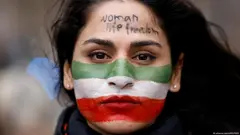 Iran protests
Iran protestsWhy Iran's revolutionary process will persist
Despite demonstrations waning during winter, the revolutionary process is poised to gain renewed momentum. After all, the regime is unable to address the combination of socio-economic and political crises driving the current unrest. Essay by Ali Fathollah-Nejad
-
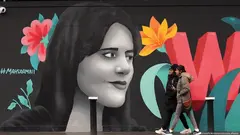 "Between Revolutions" by Vlad Petri
"Between Revolutions" by Vlad PetriThe power of freedom
Using never-before-seen archive footage from Iran and Romania, director Vlad Petri tells the story of two women in the revolutions in Romania and after the fall of the Shah in Iran. Rene Wildangel watched the film for Qantara.de
-
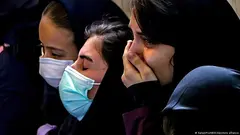 Iran – schoolgirl poisonings
Iran – schoolgirl poisoningsThreats in place of investigation
The Iranian regime has pledged to mete out harsh punishments to those responsible for suspected poison attacks on girls’ schools. Such promises ring hollow. If nothing else, the state appears to tolerate the mysterious poisonings. Analysis by Ali Sadrzadeh